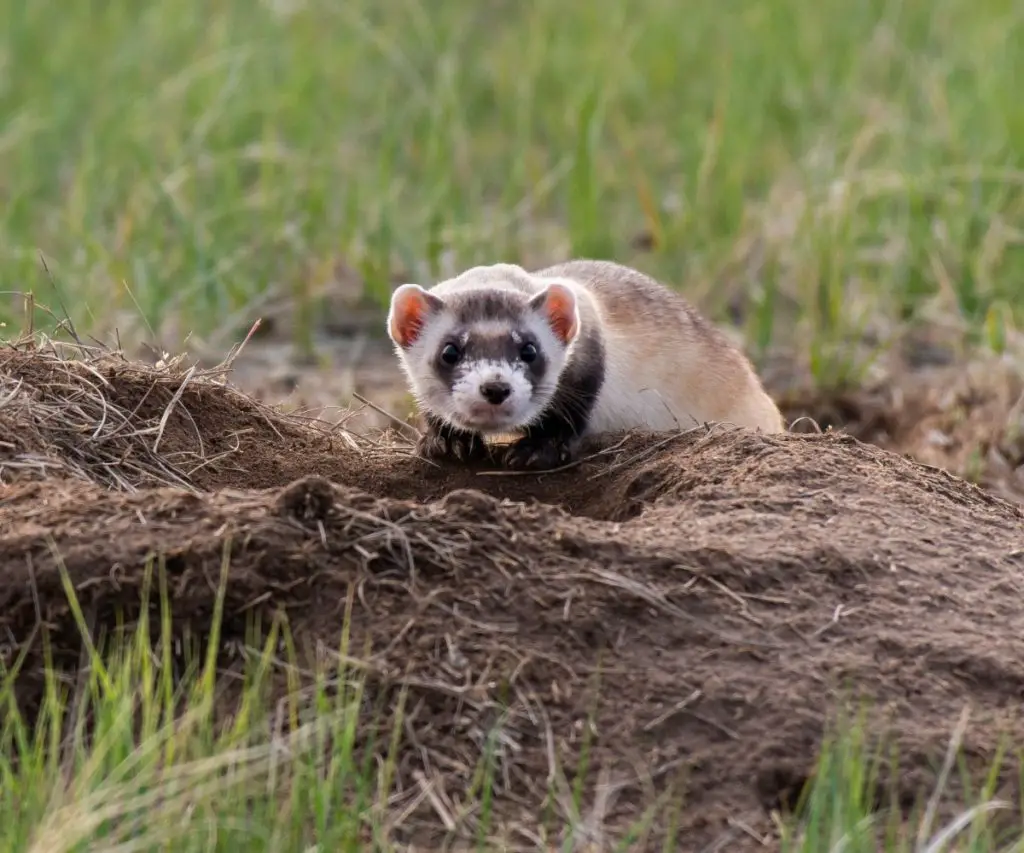Not many people realize that there’s a species of ferret native to North America. Black-footed ferrets used to run wild in the western plains of the United States until their population diminished so greatly that people believed they were globally extinct. Their small population continues to be one of the most endangered mammals in the world. Without the black-footed ferret, prairie ecosystems in the United States lose an important contributor.
How Do Black-Footed Ferrets Help the Environment?
When animal species suffer major losses or go completely extinct, the entire environment they once inhabited is affected. Black-footed ferrets benefit their natural environment by being active members of a robust and diverse ecosystem. Without the black-footed ferret, the grassland environments they inhabit lose an essential component that keeps the ecosystem functioning properly.
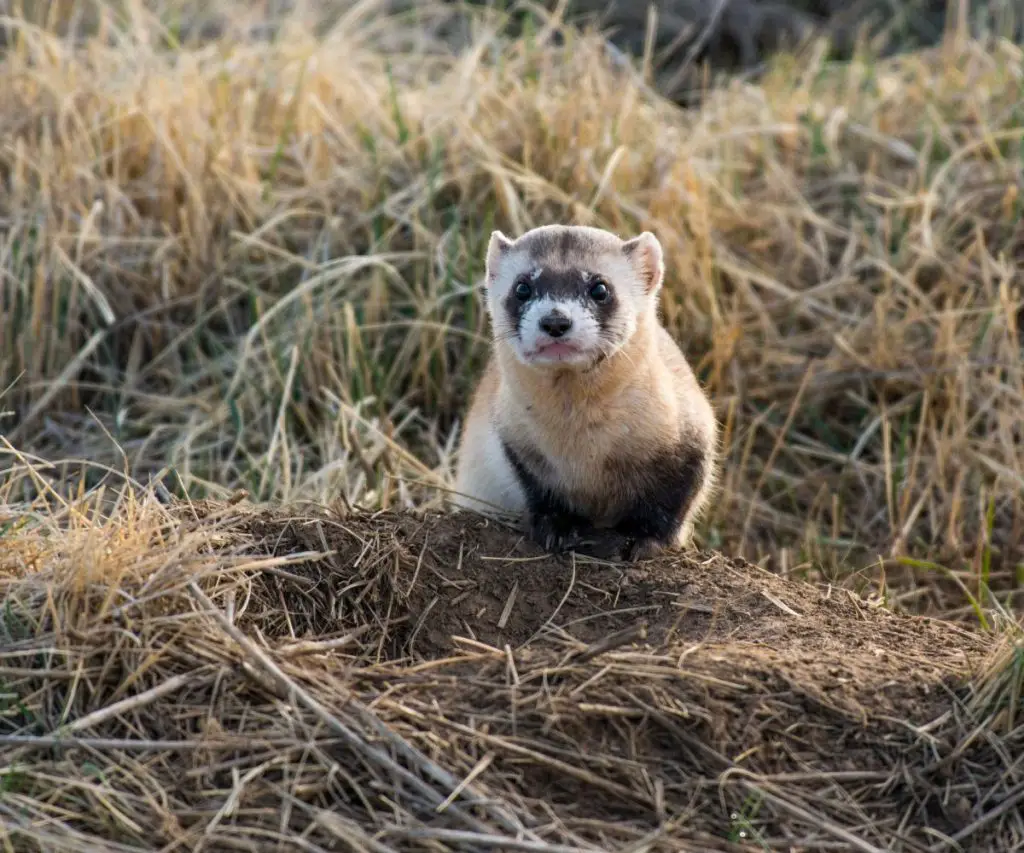
Why Are Black-Footed Ferrets Important?
There are fewer than 400 black-footed ferrets left in the wild today. Although this is a small number, conservation efforts have helped the species as a whole to recover and continue to grow. As the black-footed ferret gains a healthy population once more, so too do the grassland ecosystems they inhabit grow and become healthier.
Black-Footed Ferrets Support a Healthy Ecosystem
The American Great Plains covers a massive amount of land and is home to more than 20,000 species of animals. Of these 20,000, over 100 species of animals are located in the Great Plains. In addition, they can’t be found anywhere else in the world, like the black-footed ferret.
Every species plays an important role in an ecosystem, a complex and interconnected system composed of organisms that interact in a given environment. Because the system is interconnected, the loss of one species can drastically affect all other animal species in the environment.
The black-footed ferret’s continued role in its ecosystem helps keep its prey population in check, provides food to predators, and preserves the integrity of the remaining natural environments of the Great Plains.
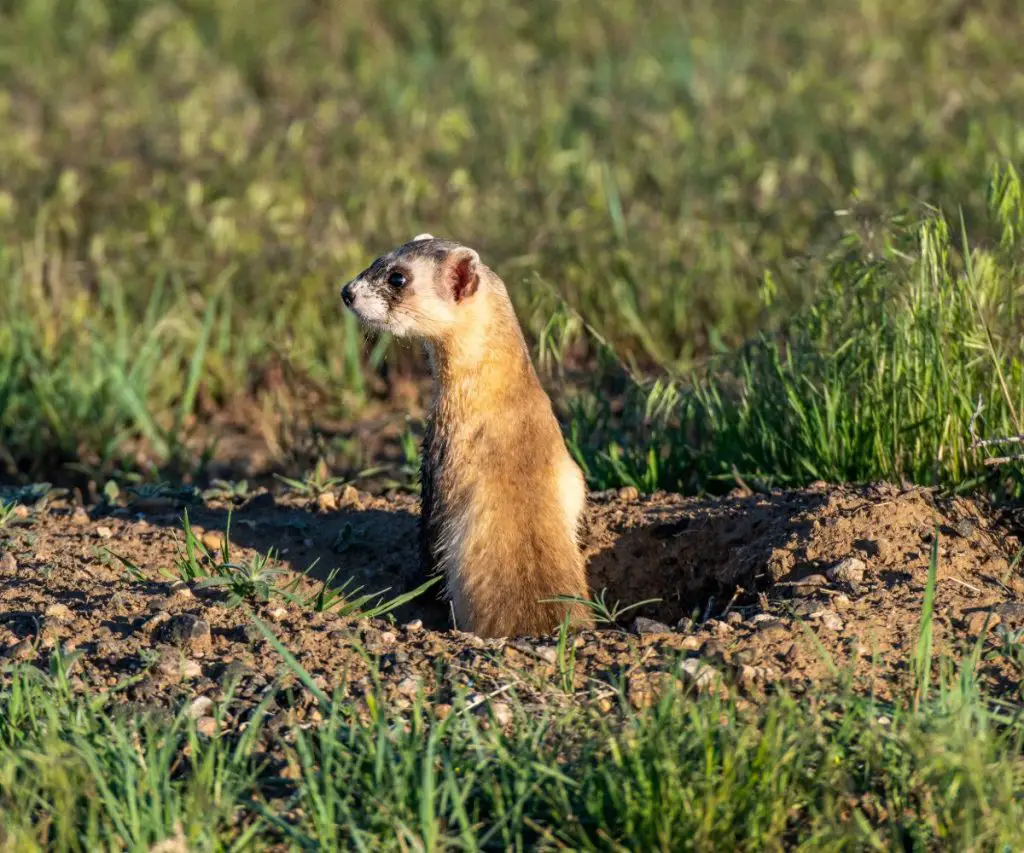
Where Can Black-Footed Ferrets Be Found?
Black-footed ferrets once spanned extensive grassland and basin ecosystems stretching from southern Canada through Texas, better known as the Great Plains. They can be found in the same environments where prairie dogs, their primary food source, thrived.
Through conservation programs, black-footed ferrets have been reintroduced to prairie environments in Wyoming, South Dakota, Arizona, and Montana.
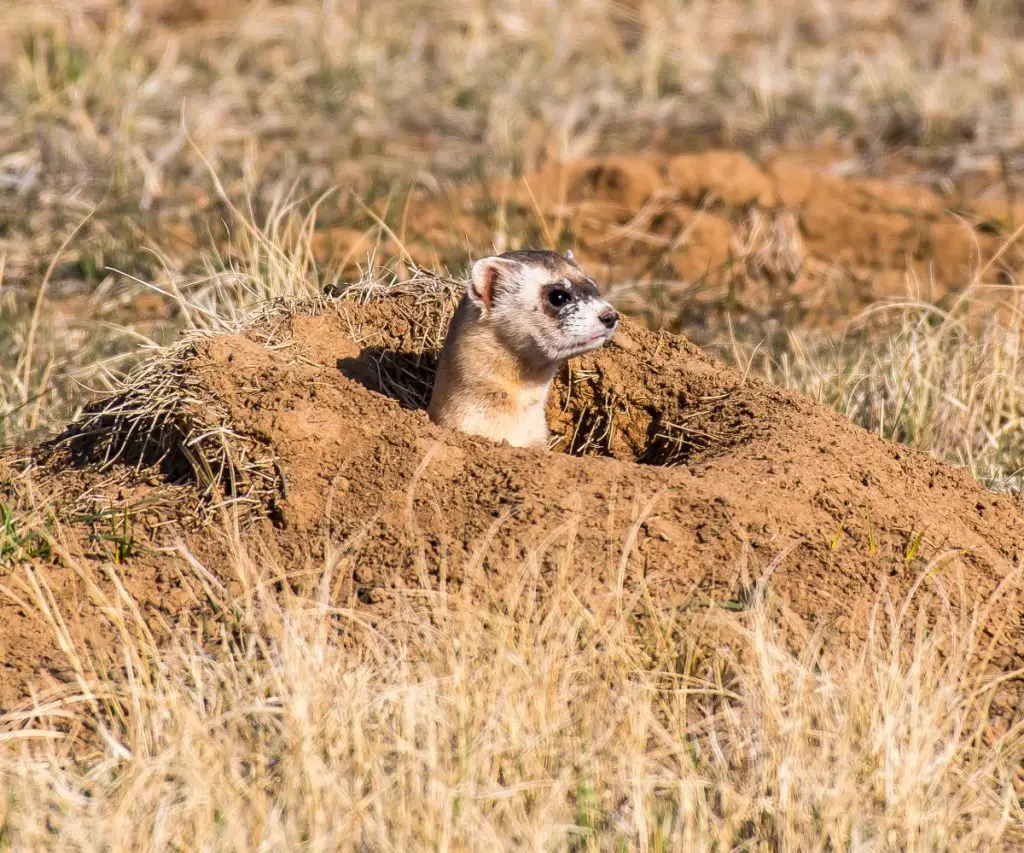
Why Are Black-Footed Ferrets Endangered?
Like many species facing extinction, the black-footed ferret’s natural habitat has undergone an extensive reshaping, destruction, and degradation from human populations. Additionally, due to habitat destruction and human interference, the black-footed ferret’s main food source, the prairie dog, has also suffered depleted numbers. Lastly, the introduction of non-native diseases to the region has wreaked havoc on the black-footed ferret population.
Destruction of Habitat
After European settlers landed on the North American continent and began traveling west, they destroyed much of the black-footed ferret’s environment for agricultural development. After the invention of the plow, it became possible to develop a larger area of land for crop production, leading to widespread species displacement.
Destruction of Food Source
Because prairie dogs live in complex underground tunnel systems that can threaten agricultural land, farmers began poisoning entire animal colonies to protect crop yield. As a result, the prairie dog, which accounts for about 90 percent of the black-footed ferret’s diet, reached an all-time low population.
Without their primary food source, black-footed ferret numbers also dropped to historic lows and continue to struggle to regain footing in the natural environment.
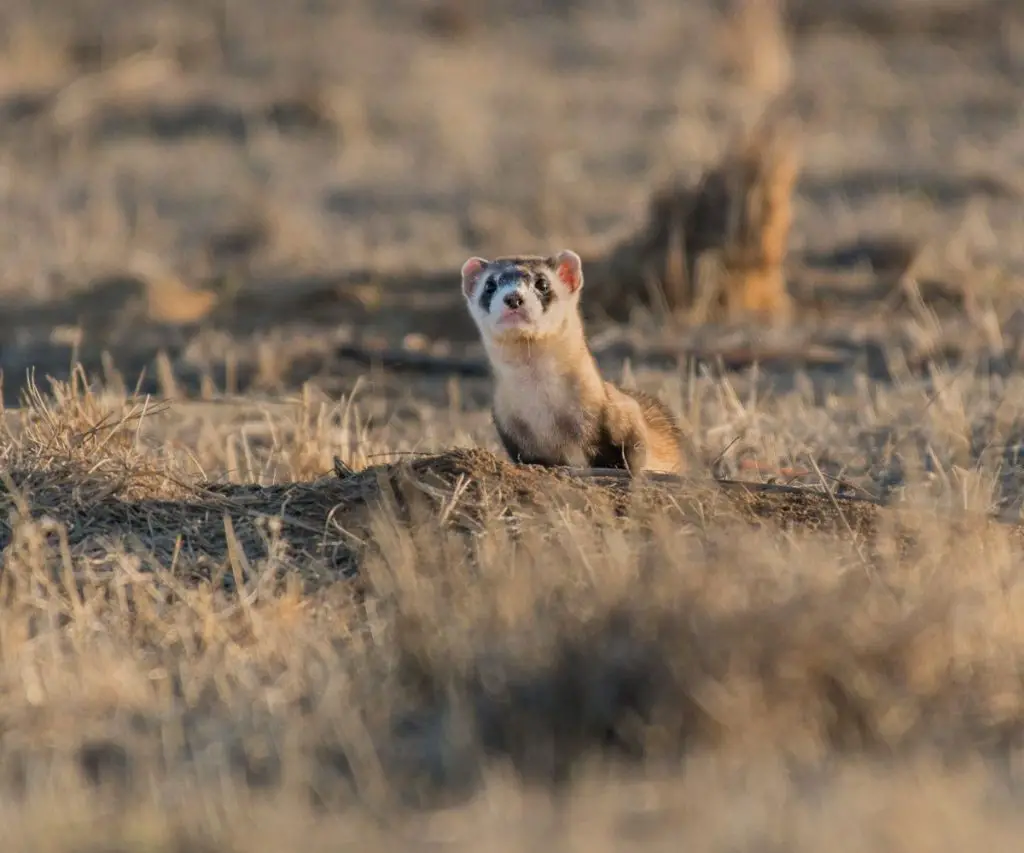
Non-Native Disease
Diseases that have had widespread effects on humans can also wreak havoc on animal populations. For example, the sylvatic plague, a bacterial disease transmitted by fleas, has a devastating impact on prairie dog colonies. When this strand of disease sweeps through an entire colony, it further reduces the black-footed ferret’s access to a food source.
This plague is caused by Yersinia pestis, which takes the form of the bubonic plague in human beings.
How Can We Help Black-Footed Ferrets?
There are several conservation programs across the United States taking steps to save the black-footed ferret from extinction. The following is a brief list of organizations that accept donations and offer ‘adoption’ programs for those interested in helping save this incredible species.
World Wildlife Fund
The World Wildlife Fund (WWF) works with other conservation organizations to plan and organize efforts to save the black-footed ferret and its natural environment from destruction. You can ‘adopt’ a symbolic black-footed ferret on their website!
Defenders of Wildlife
Defenders of Wildlife are members of the U.S. Fish and Wildlife Service’s Black-footed Ferret Recovery Implementation Team. They have worked closely with the U.S. agency to preserve parcels of land for future generations of this ferret species. To help Defenders of Wildlife continue their important work, you can donate or become a member of the organization.
Smithsonian’s National Zoo and Conservation Biology Institute
The Smithsonian National Zoo has been part of black-footed ferret conservation since the last remaining population of this species was discovered in 1981. You can donate your time, money, or goods to the Smithsonian National Zoo so they can continue to provide much-needed support to the black-footed ferret.
Revive & Restore
Revive and Restore focuses on genetic rescue efforts, which is a major component of black-footed ferret conservation. This organization performed the first successful clone of a U.S. endangered species on a black-footed ferret. Check out their website for adorable photos of the cloned black-footed ferret’s progress and to donate.
More Resources
Countless programs and organizations are contributing to the conversation and rescue of the black-footed ferret population. Other organizations include:
You can also raise awareness about black-footed ferret conservation efforts with this cute T-shirt!
Wrapping Up: Black-Footed Ferrets Keep Their Environments Healthy
As one of only three ferret species left in the world today, the black-footed ferret is one of the most endangered mammals in North America. The species survival is important to preserve such an incredible animal and help save other species found in its natural environment.

